There is usually a good deal of topics that are written about separators, isolators and such. I thought it might be good to put it all in one place. Hopefully this will help in understanding of what they are and how they work. Possible pro’s and con’s of various units’. I will try to give you a straight assessment of different units, but for will also layout my personal solution and why at the end.
The first question we have to ask is why we need one in the first place. In our Sportsmobile (RV’s) we have two battery systems, the first one we will call the “house” battery. The house battery may be one single battery, or multiple batteries wired in parallel. Yes, I know we could take a couple 6 volt batteries and wire them in series, but that is a different discussion. When I say wired in parallel, I mean the positive terminals attach to the positive terminals of the batteries
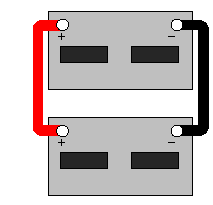
We also have the “van” battery, or”coach” battery. It may also be multiple batteries (diesel) or just one battery. For simplicity sake we will refer to them as the “Van” and “House” batteries. These two battery systems can be totally independent of each other. The van system should only power the things needed for the stock van, headlights, turn signals, brake lights, etc. One of the items that should be moved from the van battery circuit would be possibly the radio or entertainment system.
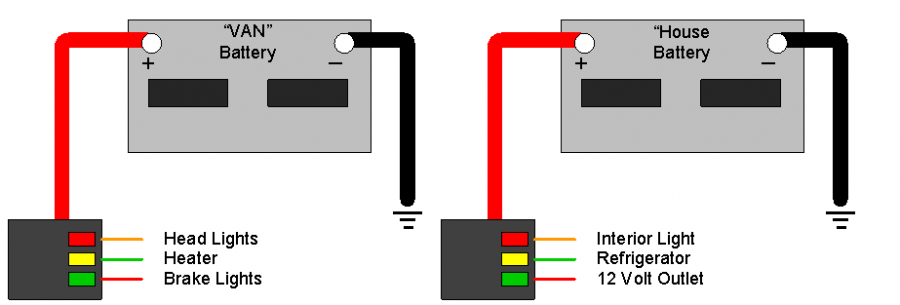
Now that we understand that we have two separate battery systems, why do we need to keep them separate, and/or connected for that matter.
I have shown each battery system having a distribution or fuse box, which they both have, but each battery has their own special task. The “Van” battery is there to primarily start the van, its main purpose in life is store the power needed to turn the engine over and get it running. After that the alternator should take over and supply a source of power and recharge the battery. For the “Van” battery to perform this task it needs to be fully charged or close to it. When you turn off your van as long as you don’t leave and of the loads on (like headlights) when you come back to start the van there will be a relatively full charge available to start the van. Of course, in reality there are parasitic loads, and the fact that overtime the battery will lose some of its power.
Now if we look at the “house” battery, it has a completely different usage model. We want it to run our refrigerator, lights, stereo, computer, etc. All these items take power to run, and they get that power from the “house” battery. Let’s say we have a 220 Amp Hour Capacity battery, so that means it could supply 220 amps for one hour right? Well not really, we know we shouldn’t run the house battery below 50% of its capacity, so it would be more like 110 Amps in an hour. Luckily most of do not have things attached to the van that take 110 amps. But you may have a refrigerator that uses 2.4 amps when running. If we assume it has 50% duty cycle it would use ( 2.4X 50%) 1.2 amps per hour, or more importantly we could run the refrigerator( 110/ 1.2 ) or 91 hrs and 40 mins. Of course it is never that simple because the refrigerator does not always have a 50% duty cycle, but you get the idea. If I run my stereo or computer that takes 5 amps to keep running, and I use for 1 hour, I have taken 5 Amp Hours out of the battery.
If this is starting to make sense good, but what does it have to do with isolators of separators. Well one of the things each battery system has is a way to charge it back up to full capacity. The easiest one is the “Van” battery; we have an alternator that generates power while the engine is running. It will provide power in amps to the overall system. The Van running systems will take about 35 to 40 amps to keep the vehicle running, if you add in air-conditioning, headlights, wipers etc you could get up to 90 amps, and of course some amount of that power will be needed to charge the battery backup.
Now let’s look at the ”house” battery, how do we charge it up. Most house systems have a form of shore power charger, this could be built into your Inverter, or take the form of a charger. You could also have solar; this will also provide power to charge up the house battery. So let’s say I just have my inverter charger, which I plug in while I am at home. I take off on a trip, drive for six hours and have found a place to camp. When I arrive I should have a fully charged “Van” Battery but my house batter will not have a 110 Amp Hours left. I have used some power to keep the refrigerator running. So using the data from above 6X(2.4X50%) or 102.8 Amp hours left, that is still not bad. Wait let’s say I was running the Starcool on high for three of those hours, 20 amp draw at three hrs would be 60 amp hours, now we are down to 42.8 Amp Hours left. Oh and the kids were watching a video on the TV in the back, the wife was using the computer, you had a light on, charging the camera, etc. So that added up to another 20 Amp Hours, so now you are down 22.8 amp hours left, and you want to stay for two days. Well, you don’t have enough power to last a day, of just using the refrigerator.
I could add solar, or carry a generator, both of those would let me put charge back into “house” system. But wouldn’t it be better to arrive at the camp site with my full capacity of my house battery instead of having to charge it up when I get there? Well we had a good power source while we were driving, the alternator had some left over capacity while we driving, we could have just connected the house battery and van batteries together in parallel.
The first solution comes in a simple switch.
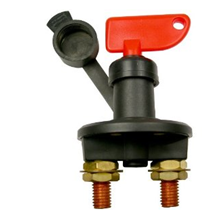 http://www.amazon.com/Pico-5575pt-Ma...sim_sbs_auto_1
http://www.amazon.com/Pico-5575pt-Ma...sim_sbs_auto_1
• 2 Position On-Off with Removable Key
• 3/8" x 3/4" Length Studs, 4 3/16" Mounting Holes in Base
• 12 Volt 500 AMP DC Momentary(10 Seconds), 12 Volt 350 AMP DC Continual
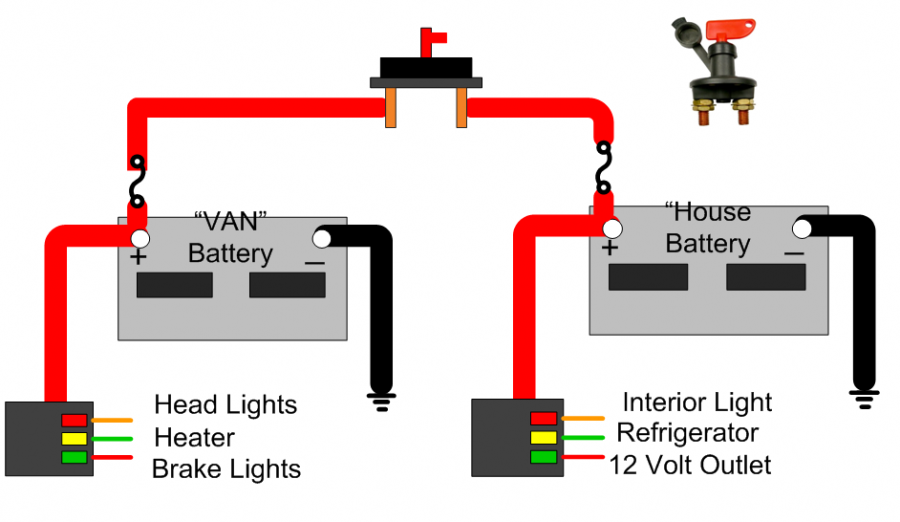
So now armed with my new switch, I combine the two systems before I leave for the trip. I arrive at my destination and have a full House battery and a full Van Battery. I get out of the van and I am in a hurry to get dinner going, I pop the top on the Sportsmobile, get out the stove and get a campfire going. We have a grand time camping for two days, the battery power looked good so we splurged and used a few extra electrical devices. I was really surprised at how long my battery power stayed good, all was well. That is until I went to start the Van. Only then did I remember that I forgot to turn my new battery switch to disconnect. I had the house and van battery systems tied together the whole time and I depleted both batteries. Now when I turn the key the van battery does not have enough power to start the van. The last camper had just pulled out, and I only get cell coverage 10 miles up the road.
So while the switch was cost efficient, it could not be located in a convenient space. It had to mounted under the hood to keep the cable lengths to a minimum. Out of sight, out of mind they say. So I was in search of a new solution. So I went out and found a relay that would work (commonly referred to as a solenoid)
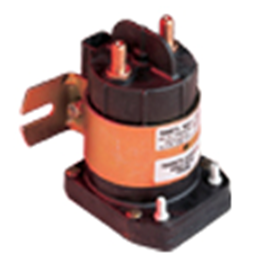
This is rated for continuous duty at 225 Amps DC with a an inrush or momentary capability of 600 Amps DC.

Now we have it, a simple solution to separate my batteries when I want to, this is really the cat’s meow and still for a low cost. Well for the next couple of outings this solution works well. That is until the day I must have bumped the switch getting out of the van, because I am sure that I turned the switch off. So maybe there is a better solution out there and we just need to keep looking. Then one day browsing the latest JC Whitney catalog I see it. This new thing called an Isolator; actually SurePower invented the diode based isolator in 1959.

Now this must be the solution

Now the isolator is a grand solution, instead of using an old high power solenoid to combine the batteries, it is high tech and uses things called diodes. What does a Diode do? A diode only lets current flow in one direction, there are the electrical equivalent of a check valve. In the case of the isolator we let current go the direction from the alternator to battery, in this case both batteries, but the diodes prevent the current form going the other way, so we cannot get current from the Van Battery to power the House battery. No more switches, just install it and forget it. The isolator really did take care of some of the problems of using a Solenoid to connect and disconnect your batteries. One of the problems they liked to point out was when you switched the Solenoid on that current would flow from the charged battery to the discharged battery, thus if you switched the solenoid to connect before starting you would still; see some discharging of the van battery. Also, people were generally not using the proper gauge wire to handle large loads, so if your Van Battery went bad during the time you stopped and you turned on the solenoid and started the Van, all the cranking power would come from the house battery, that wiring may not handle that much current. All in all, it solved the one major problem and that was you didn’t have to turn a switch, it would just work. Undersize wiring was bad in either case.
So if this utopia, why did we need something new? Well for a Diode to do it job, it needs to rob a little power to push through this door. It is called forward voltage drop. For most normal diodes made of silicon, it is about 0.7 volts. That means when the alternator is putting out 13.1 volts to your batteries you are really getting 12.4 volts to the battery. This of course was leading early battery life failure and loss of capacity in your system as you were never really getting your battery fully charged. So of course there had to be a better solution out there waiting for our use.
So now we have the Smart Separator, in this case we will pick on the Surepower 1315 -200. We will explain later what the difference is between the 1314 and 1315, but the 200 stands for Amps, so the Surepower 1315 -100 is a 100 amp model. Ok, what makes this so different? I am still using a solenoid, so why is it different. The Diode based isolators brought in ease of use, there were no switches to turn on or off, so how do we make the old solenoid work like that. Well luckily electronics had moved at a pretty rapid pace since the Isolator was first made in the late 1959. So there were quite a few programmable devices that you could use to decide when to switch the solenoid on or off. The first thing you have to do is monitor the voltage of each battery system. That is pretty easy because you have two large wires running to the solenoid one from each battery. So they developed a circuit to monitor the voltage, If the voltage on the Van Battery was above 13.2 volts (this was considered a charging battery) it would turn on the solenoid and connect the two battery systems. When you turn off the Van and now your battery starts to drop below 12.8 volts the solenoid is disconnected. Ok, so they have to add few circuits for spikes and add a delay between turn on and off, but now we have the smart solenoid based separator. The difference between the 1315 and the 1314, is that the 1314 works in one direction. It only monitors the van battery. The 1315 monitors the house battery also, so if you are plugged in at home or have solar charging your house battery, you can connect the two and charge the van battery also. This is great if you leave your battery parked for a while. Sportsmobile went to the Surepower 1315 in 2004. Note: the original documentation for the SurePower did not have a fuse on the ground. I know my Sportsmobile built in 2004 did not have a ground when installed. I would highly encourage anyone that has theirs wired in with out the ground to add it. As you can imagine the 12 volt connections are pretty hefty, that leaves the ground as the only spot for a reasonable fuse.
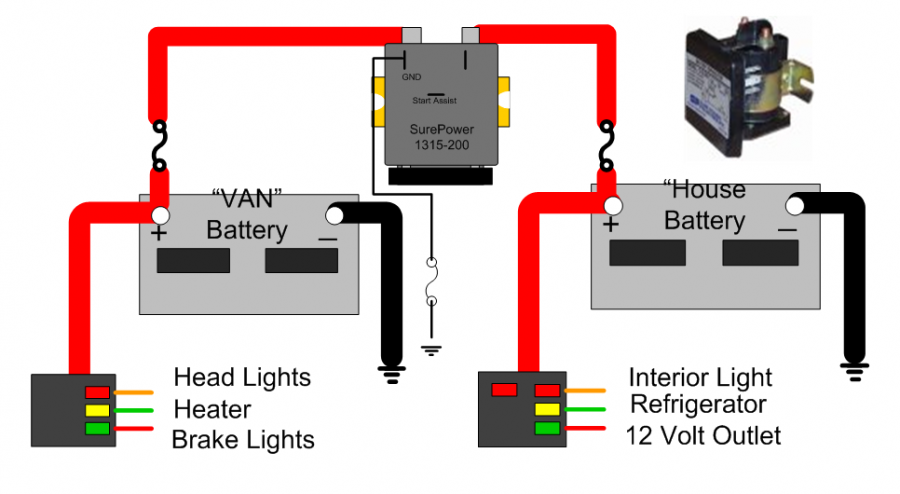
SurePower also designed in a circuit that probably caused more problems than it ever solved, the dreaded Start Assist Mode. Their intentions were good, but I believe it just caused another set of problems. The start assist circuit was to be hooked into the start circuit on the ignition. When you turned the key to start they would connect the solenoid if the House Battery was no less than 0.85 volts less than then Van Battery. The end result was if your van battery was going bad, the start assist mode would kick and start the van using the house battery. In reality it was just masking the battery going bad until it was bad enough that assist mode would not work. This of course was synched up with a guy named Murphy, so instead of dyeing in your driveway it waited until you were camping.
Note: SurePower was purchase by Cooper Busmann in Dec of 2007, until then it was a privately held company. SurePower recently had a recall (June 29, 2011)
http://www.cooperindustries.com/cont...l_info_NA.html
It is good that they took the step and made the recall, unfortunately they did not sound convincing in there cracked capacitor theory. Although it would be highly feasible as a root cause
There are plenty of other manufacturers of Smart Systems out there. Many are based off of a solenoid the same as the SurePower 1315-200. But, one of the new ones that is now being used by Sportsmobile is the Blue Sea 7620

or the 7622 it has a manual override. One of the nice things about the 7620 is that it uses a magnetic latch relay. So what is a magnetic latch relay and what makes it useful. The SurePower solenoid is a continuous duty high power relay. It uses 1.5 amps of power to keep the solenoid closed. A very good explanation of a magnetic latch relay can be found at
http://intellitec.com/
Relay Closing Figure 1
Positive polarity applied to the coil. Current flowing in coil. Plunger pulled in to coil. Rod magnet attracted to plunger by opposite polarity.
Relay Closed Figure 2
Power removed from coil. Magnet blocks plunger from coming up, maintaining contact.

Relay Opening Figure 3
Negative polarity applied to the coil. Current flowing in coil. Plunger pulled in to coil. Rod magnet opposed by plunger same polarity magnetic field, swings out to the side of the housing
Relay Open Figure 4
Power removed. No current flowing in coil. Plunger pushed up by return spring while magnet is off to the side. Contacts open. Magnet comes to the rest at the side of the plunger.

So we can see that we do not need to power the solenoid all of the time, so this saves power. The Blue Sea 7620 uses less than 40 mA when in continuous use. It does use almost 7 Amps when changing state. The Blue Sea also has some isolation lines, which you wire to the start circuit; this prevents the batteries from connecting during starting, as the spikes may cause electrical problems with delicate equipment.

I must say I like the Blue Sea unit very much; it still has a pretty high cost, but probably worth the extra
The Blue Sse unit can handle 500 amps continuous duty (You need 2 X (4/0) gauge wires for that)
The SurePower 1315 can handle 200 amps continuously, the Blue Sea also specs over 100,000 cycles compared to the Surepower 50,000 cycles.
A note about cycles, at least three people I know have had the Surepower relay start acting up with a problem called contact resistance. This is not really an unusual problem with high power relays. Since they are made to connect large amounts of current across them the expectation is that large amounts of current change are there when they are activated. This is called the minimum wetting current, what it means is the minimal current needed to literally blow off the oxidation and crude left on the contacts. So connecting these high power relays with small current changes aids in making the contacts get cruddy. This builds up a resistance across the connection, so even though the unit is connected you really are not moving much current across the connection. The SurePower relay can be pulled off, taken apart and cleaned. I do not know about the Blue Sea. One of the things they do to improve cycle count is make the contacts out of silver alloy. So when looking for a Separator it is good to see if they are using silver alloy for contacts
There are also other units based off of FET’s Field Effect Transistors. A FET needs a gate terminal that controls the flow in this way it is much like a solenoid. It has a much smaller drop in voltage across it than the diode in a isolator. My concern in FET based solutions is that car electrical is not the cleanest in the world, spikes caused by cranking can be pretty bad. I have never seen a solenoid go up in smoke; I have seen FET’s catch on fire. I am not convinced that it is the best solution for the job. Your mileage may vary.

This is a 80 Amp “Solid State” battery isolator by PowerStream. One nice feature of 80 Amp PST –SSB2180 is that you can also configure it instead as a battery protector. What does this mean? Well in one mode it acts like a battery isolator the trip points are 13.2 volts for on and 12.6 for off. This is in line with other smart isolators. But with one of their input wires shorted to ground you turn it into a battery protector. In this case you would wire the aux battery terminal to a load or distribution panel. Now the connect voltage is 12.5 volts and the disconnect voltage is 11.8 volts. But if we already have a second battery we really should not need that function.
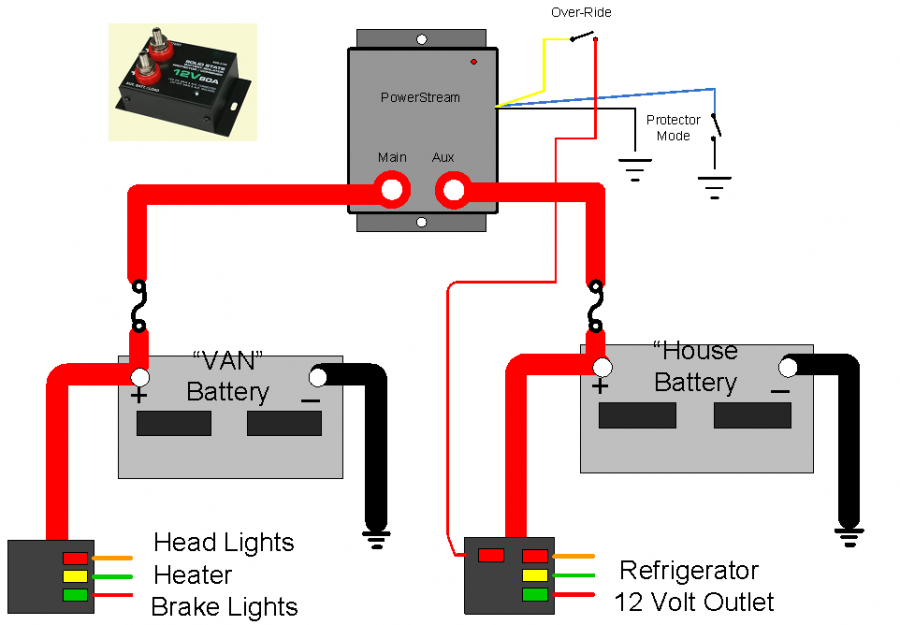
Interestingly here is their 150 Amp version

More importantly this is what they say, a quote from their website. They seem to be OK with their smaller 80 amp version, but have some concerns making a 150 amp version out of FETs . I do have to respect their honesty.
http://www.powerstream.com/battery-isolator.htm
“Seriously, we can design a solid-state battery isolater, but we like the forgiving nature of a big contactor. If you have a 1500 amp spike, the relay's terminals can probably handle that, whereas MOFETS will simply fail, and when one fails the rest cascade like a waterfall. The worst thing that can happen with a contactor is that the relay contacts will weld together if the big over-current happens while the contactor is trying to open. This (to us) is a fail-safe condition, requiring only some banging on the relay to get it working again. This hybrid system is really the best of both worlds, solid-state control and solid-metal contacts.”
Both of the PowerStream models have an override switch to turn it on.

So what does this mean, which one do I buy? It really comes down to you, and how much money you want to spend. If you want automatic bidirectional charging you need the SurePower 1315 or the Blue Sea 7620 or 7622. I do not own one but I believe the Blue Sea unit to be one of the best out there. I did like the 150 amp unit from PowerStream but did not see any info on number of cycles or what the contacts were made of. I suspect that if I go back to a smart separator it will be the Blue Sea Unit. Another important thing to remember is your wiring, it does not do you any good to have a 200 + Amp capable separator if you do not have the wiring to support it.
What do I use now? I use a variation of the second solution, instead of using a switch to turn on the solenoid I tap into the “Run Circuit”.
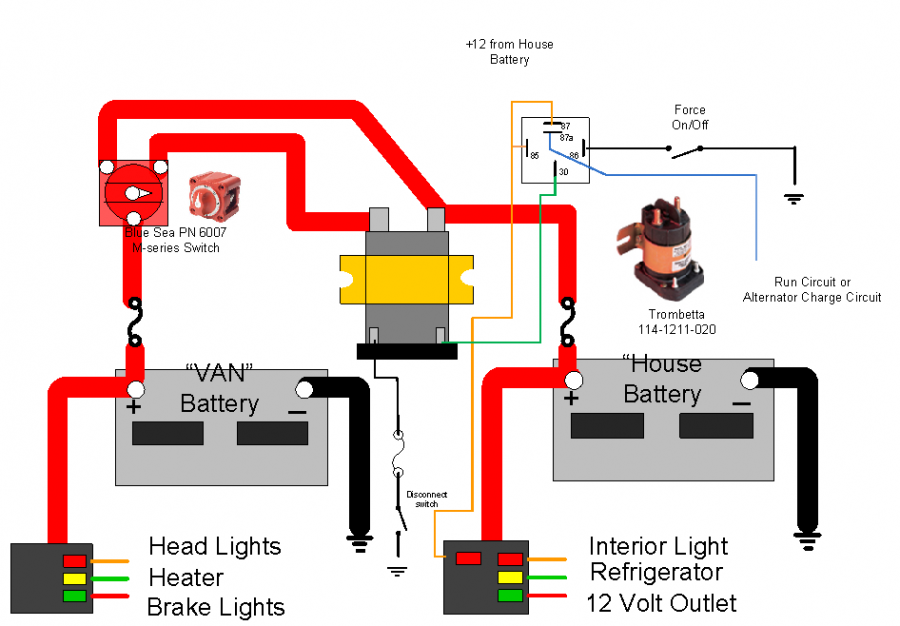
I am currently using the Trombetta 114-1211-020 Solenoid that came off of my SurePower 1315. It is rated at 225 Amps continuous duty, 1.5 amps closed, silver alloy contacts, 50,000 lifetime cycles. If purchased new it would go for $42.00. The primary mode that is used every day is that the Solenoid is tied the “Run Circuit” on the key switch, you could also tap off of the trailer light relay. In either case if the van is running the solenoid is closed and both batteries are being charged. The small relay let’s me use a switch to turn it on when not in “Run” mode. I also have a switch on the ground connection of the coil, this just disables the solenoid. I also have a Blue Sea 6007 switch, this is my back up switch. If the solenoid goes bad I move the Blue Sea switch to bypass the solenoid. I did have my SurePower develop a problem while on Vacation; this could have made dealing with that issue a lot easier. So I have less than $100.00 dollars invested in a pretty robust solution. I may move to a Magnetic Latch Relay at some time also, but they are more difficult to wire up to the run circuit, because they only need a pulse and the polarity or input changes.
How about the Radio Switch?
My 2004 SMB has a radio switch to enable it to be powered from the house battery instead of ACC or Run Circuit. This is convenient for turning on the radio from the back of the van. It does not as wired; prevent the radio from draining power from the Van Battery. There are three more power connections, in the Ford Radio Harness. A 5 Amp connection from Fuse F2.36 (it is Hot in Park or Headlights On) I suspect that this is for the brightness level of the radio display and most likely not causing any issues. Another 5 Amp connection is from F2.27 (Hot in Start), again probably not an issue it is used to isolate radio during starting. But we also have a 15 Amp connection F2.22 (Hot at all Times) This could cause a problem, I suspect the main purpose is for the memory of the radio settings, but the input power is probably switched internally on the radio, so say when the CD is playing the CD player gets it power off of this circuit. Without schematics of the radio, I can’t really tell. If you have an aftermarket radio connected to your ford harness, you need to check how it is hooked up. I have heard of some SMB’s having a relay instead of a switch. I would agree this is a cleaner solution (I must have over 40 ft of power wire for my radio using just the switch. There have been some reports of the relay being part of the radio switch problem. If properly wired, this should not be an issue using a relay. The power should have come from the house battery. I have added the two possible radio switches below that I know of. If you use your radio a lot while in camp you may want to move the F2.22 connection to the house battery.

Here is the Relay solution; you only need to run one wire from the house battery up the relay. It connects to the normally open input of the relay and to the coil. The other side of the coil can then be switched to ground.
